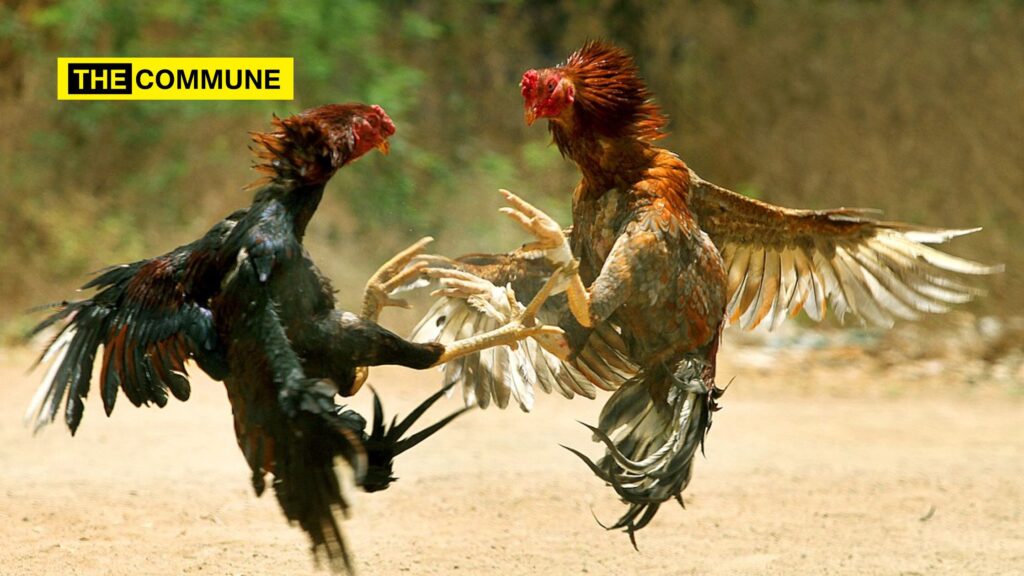As with many states in India, the annual sport of cock-fighting is popular in Andhra Pradesh during the Sankranthi celebrations. It is an old, popular, long-standing rural and semi urban tradition included in Andhra’s harvest festivities, during the three-day Sankranthi celebrations every January. Rooster fights were always popular in the countryside with almost all classes of people, willing to participate in some manner (purchasing, raising, displaying, training, selling, betting etc) because of better affordability than bull shows and fights, which have been an exclusive and expensive priviledge of the wealthy in Andhra.
Last year and this year, saw a peculiar addition to the cock-fighting Sankranthi tradition in Andhra – imported birds alongside the hitherto native birds in the literal “cockpit” of the fighting birds. Rural, semi urban as well as urban populations, have been curious about the newest bird entry into the rooster – fighting arenas in the agricultural coastal Andhra belt which includes Krishna, Guntur, East and West Godavari districts.
Fighter birds from Peru in South America are the latest entrant! Imported Peruvian rooster birds or Indian birds that have been cross bred with the Peruvian birds are becoming a familiar sight, in the high-stakes rooster-fighting arenas that spring up every January, in time for the three day Sankranthi festivities. Thus far, the rooster bird of preference for the annual cock-fights has been the Andhra native breed of “Aseel”, known for its fight-to-the-finish temperament and capabilities.
While the Peruvian rooster is known for its aggressive, attacking nature, the Aseel rooster is known for its stamina and endurance in long, fight-to-the-end battles. Taking the advantages of both breeds into consideration, breeders are trying to promote a cross-breed of the Peruvian and the Aseel birds. Lakhs of rupees are spent on the purchase of the birds, their special diets, their overall care including grooming, their display, registration etc as well as more money spent on the betting activities that happen before and during the sport of cock-fights. Adherents of tradition continue to swear by the Aseel bird while others are willing to take a chance with an imported bird or a cross-bred one. The native Aseel rooster’s current market price is less than one lakh while the imported rooster or a hybrid bird (cross between the Aseel and the Peruvian bird) costs upwards of a lakh, apart from its living and training expenses. The next five years are sure to give breeders, purchasers, audiences as well as the cock-fight gamblers, a fairly good idea of which type of bird, offers the best bet.
In the meanwhile, a section of ordinary citizens and a few political leaders have complained that betting on the fighting roosters during Sankranthi reaches a whopping ₹50 lakh and ₹75 lakh overall. They say this type of high stakes gambling should be discouraged by the government, as gambling is not associated with traditional Sankranthi celebrations. In the past, farmers that could afford it, would raise and train roosters as a matter of pride, as a hobby and entertain villagers during the harvest celebrations for a small monetary or non-monetary reward but they stayed away from professional style gambling in the name of a traditional sport. In the recent past, when cases against the popular game were litigated in court (similar to Tamil Nadu’s controversial Jallikattu cases), the Andhra Pradesh High Court had not banned the sport but placed certain caveats/ conditions with regards to the intent and conduct of such bird fights.
Some leaders claim that while conducting the sport in the conventional celebratory manner is acceptable, it shouldn’t be utilized to encourage big betting and gambling habits. They claim that many leaders of the incumbent YSRCP government are involved in encouraging just that. Seemingly innocent Sankranthi festivities including rooster fights, take on a darker shade, in the backdrop of leaders of Jagan Reddy’s YSRCP party being involved in other gambling related, illegal casino activities, that came to light last year.
Click here to subscribe to The Commune on Telegram and get the best stories of the day delivered to you personally.

